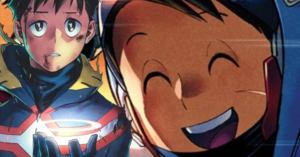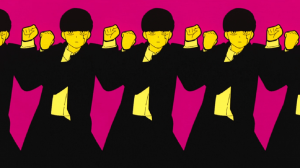Earlier this month, the anime community went through a bit of emotional whiplash thanks to the return of Attack on Titan.
Videos by ComicBook.com
But, instead of being traumatized by the show’s gore, fans were left enraged after news broke that the anime’s second season would only host 12 episodes compared to the first season’s 25-episode order. Netizens took to Twitter to explain their frustration over the paltry gift, but their indigence has highlighted a long-overlooked concern with the anime fandom.
It’s time to face it; Fans are living through an animation crisis, and its time audiences fought back against the impending anime recession.
Some fans may look at the state of anime and balk at the idea of a recession. The industry is doing better than it has in recent years, and titles like Your Name and Dragon Ball Super continue to drive attention to the anime community. Last year, the Association of Japanese Animators said the industry raked in a staggering $15.9 billion dollars, making anime one of Japan’s most lucrative exports.
However, the industry’s use of its earning has a major flaws. Many – if not most – of the animators working in the anime community are not seeing a dime of that revenue, and Japan is running short on artists.
After Wit Studio confirmed Attack on Titan‘s new season would be shortened, Thomas Romain decided to speak up about the industry’s unsustainable relationship with animators. The artist, who currently works on anime titles in Japan, wrote that it’s “sad but there is a real shortage of staff because of anime overproduction.”
“It’s now nearly impossible to produce 26ep high-quality shows. Studios are already doing their best within the schedule they get from clients,” he continued. “With new actors [sic] like Netflix, Amazon in the US and Huge Chinese investors, Japanese anime studios are being asked to produce more and more.”
Romain went on to explain that the industry is not able to replace its parting animators with fresh blood because fewer people are training in the subject. “Less and less people want to work in this field,” he wrote, and it has to do with the profession’s insanely low income.
Romain stressed that animators get paid very little in Japan with junior assistants and beginners only earning $4 and hour around Tokyo. On a monthly basis, some animation studios can only pay their artists between $870 and $2,000 a month if they are lucky. And, to get that kind of pay, employees are expected to work between 50-80 hours a week.

As for where the money goes, animation studios may make lots of money of home sales, but it goes back to rights holders and production staffs. When there are so many different anime titles in production, resources such as revenue are already stretched thin. Workers are still expected to produce more content for Japan’s ever-growing anime appetite, but overproduction doesn’t equate to pay raises. In many cases, the return investment on those titles may force a studio to withhold paychecks for a bit. And, after so long, any animator would say they’ve had enough.
At the rate anime continues to be produced, the industry’s bubble will blow sooner rather than later. Studios can only continue pushing for so long until their artists walk away, and many smaller companies would be forced to close shop. An over-saturated market can only retain so much before it cracks around the edges, and Attack on Titan’s most recent season has fans thinking the animation crisis is more than just a joke. It’s inconvenient – and not just for fans. When it comes down to it, anime artists are the ones suffering the most.





